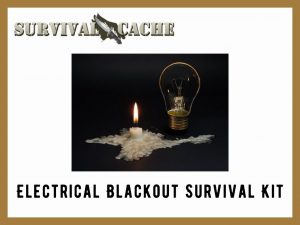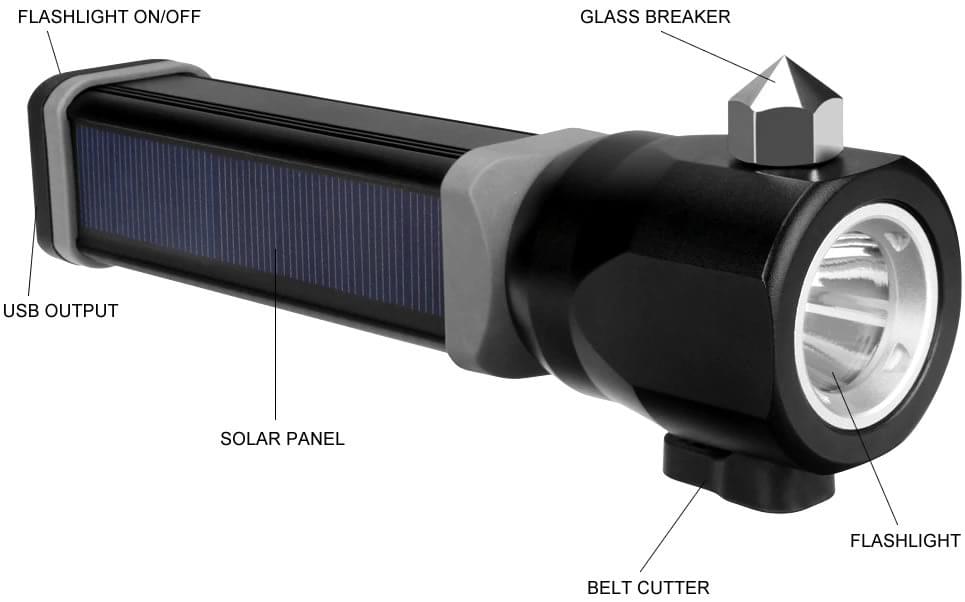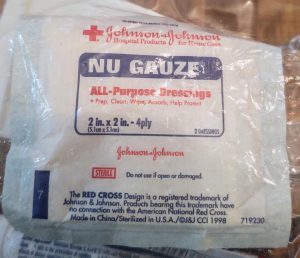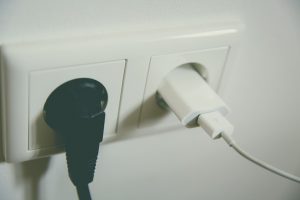One of the largest blackouts in history occurred in 2003. It took place in the northeast region of the United States and Canada. It affected 50 million people who were without electrical power for several days.

Blackouts happen every year and can affect anyone throughout the world who is dependent on an electrical power grid. But what causes blackouts? To better understand that there a few definitions that would be useful to know.
SKIP AHEAD
Brown Out
This is when there is a reduction in power in the electrical system. This can be done intentionally by a power company to reduce the load on the system during disasters or the cause of heavier than normal power usage.
Blackout (Power Outage)
A blackout, or power outage, is a complete loss of electrical power that can affect a small area or an entire region. These occur when there is physical damage to the electrical grid that prevents power from arriving at its destination. For example, a severe storm that destroys power lines and poles would result in a blackout.
Rolling Blackout
A rolling blackout is similar to a regular blackout in that there is no power being delivered to a destination. However, these are typically carried out by the power company to prevent damage to the electrical system, which would result in a longer lasting blackout.
The Dangers of a Blackout
Now that we have a better understanding of what a blackout is, the next step is to look at some of the dangers associated with this situation as well as some of the items needed to deal with these hazards.
No Lights (Inside)

No lights, no big deal right? Having no source of light in a home will create a dangerous situation. The likelihood of trips, falls, damaging items, and grabbing the wrong bottle of something (like a medication bottle) will increase dramatically. Avoid the darkness and its hazards by having some alternative lighting available.
- Flashlights and lanterns that are battery or solar-powered.
- Candles and oil lamps are another alternative but can pose a safety risk.
Here’s my favorite solar-powered flashlight:
 Multi-Purpose
|
|
View Latest Price |
No Lights (Outside)
With power, most homeowners turn their inside lights off at night. But this still leaves outside lights, streetlamps, and businesses. If you have never experienced a large scale blackout at night you don’t realize how dark it can get in a town or city. This makes it much more dangerous to travel at night. If there is no need for travel it may be safer not to.
But if you have to go somewhere keep a few things in mind.
- When driving you should reduce your speed to accommodate the lowlight conditions. Also stay extra vigilante by avoiding distractions like phones, other screens, and the radio. Simply put if you are driving then that is all you should be doing.
- If you are traveling by foot or bicycle you should have a light source (flashlight) and it would also be a great idea to wear a reflective vest.
Blackout Survival Kit: What Items To Include?
Water

When the power goes out, there still may be pressure in water lines to deliver water to your taps. However, one thing to keep in mind is that if a water treatment plant does not have electricity, the processes by which they clean that water may not be operational.
Water is one of the most critical resources to our survival and due to that, we always require a clean supply of it. Other than knowing the skills of how to find and clean water, there are two things you should be doing when it comes to water.
The first is to have a stockpile of emergency water. I am not going to suggest to you how much water should be stockpiled as that is dependent on available storage space and how long the blackout lasts.
I have always gone by the guideline of one gallon of water per person per day. But that is just for drinking under nonstrenuous conditions. Since water is essential and you never know how long an emergency will last, my suggestion would be to store as much as you can.
The second thing you should be doing is making sure you have ways of filtering and cleaning water. This is in case you do not have any emergency water or it runs out. Items to consider having are:
- Water filters
- Bleach
- Water purification tablets
- Alternative heat source for boiling water, like a survival stove
Food
No power also means the possibility of not being able to cook. The microwave and electric stoves will certainly be out of order and if the power is out for more than a day, many of the items in a freezer and refrigerator will spoil. Because of this here are some items to consider as it pertains to cooking.
- An outdoor grill
- Solar oven
- Camp stoves. Ones that use either fuel canisters or biomass like a Kelly Kettle or Biolite Campstove 2.
- Remember that alternative cooking methods like the above may be unsafe to use indoors. It is always best to use them outside.
Here are some food items to have on hand.
- Canned food items are great because they do not need to be cooked to consume. And there is a variety to choose from. Soups, stews, chili, sauces, veggies, fruits, beans, and meats. Don’t forget to have a few extra manual can openers on hands as well!
- Dry goods like pasta, oatmeal, cereal, etc. some items in this category may require water for cooking so take that into account when preparing your water supply.
- Survival foods are handy to have as they are specifically manufactured for these types of situations. Examples of these are MREs, dehydrated or freeze-dried pouches, and bucket foods. These foods do not require refrigeration, have a long shelf life, and either require no water or minimal water to rehydrate them.
Here are some other resources on our site that you can take a look at:
First Aid

It should go without saying that every emergency kit should have first aid supplies in it. As with most emergencies, there is a higher risk for injuries which you will want to be able to treat yourself if possible.
Even though most hospitals are required to and do have backup generators, those may not last. Additionally, the patient count may be higher which means that not everyone will be seen promptly.
A general all-purpose first aid kit should suffice although it would be wise to bulk it up with as many supplies as you can. First aid is one area that most people are lacking in, supplies and knowledge. You can never have enough of either.
Check out our guide on the best first aid kits.
Sanitation and Hygiene
Depending on what is affected by the blackout you may or may not have running water. Some people use water on their property but most of those depend on pumps to move the water. The same can be said for municipal water sources that depend on pumps for delivering water to its residents.
This means you cannot wash your hands, flush the toilet, take a shower, brush your teeth, wash dishes, do laundry. Some items to consider are:
- Extra trash bags: Trash bags are incredibly useful items and when a disaster strikes you really cannot have too many of them.
- Extra paper plates and utensils
- Extra soap for hygiene and laundry
- Hand sanitizer
- Disinfectants
- Plastic gloves
Power Generation

At minimal you are going to need a way of recharging a phone seeing that everyone has one and it is arguably the most important piece of communication gear you have. If the blackout is not widespread a smartphone can offer many different avenues of communication such as calling, texting, email, apps, and social media.
For the above purpose, small scale power generation will work best such as:
- A backup battery
- Portable solar panels
- Crank style device
- AM/FM radio. While this does not generate power (some are solar-powered or crank-style which can charge a phone) it can provide information as to the status of the emergency.
If you have the means and space available, consider a small or large generator.
Check out our reviews of the best survival solar panels. These solar panels are rugged and meant to work in any SHTF scenario.
Climate Control
Regulating our body temperature is something that we take for granted given that most people operate in climate-controlled environments. If we get hot we turn on the air conditioner, if we get cold we turn on the heat. But during a blackout that will not be an option.
What would you do if the power went out in the middle of winter? Or during a dangerous heatwave? These extreme temperatures have become more common in our world.
We can die faster from exposure to the elements than we will from the lack of water. This is why being able to regulate your body temperature is one of the most important survival skills to know. To help out with cold temperatures, consider the following items.
- Extra blankets. Wool blankets are incredibly effective.
- Dress in layers but also make sure you have insulating clothing, such as wool and fleece.
- Emergency space blankets
- Alternative heating sources like a grill or small camp stove. But again, these are not for inside use.
- Extra water bottles that can be filled with warm water and placed near the body
Here are some items to consider for keeping cool.
- Battery or solar-powered fans
- Appropriate cool weather clothing that wicks moisture away. Synthetics are great for this.
- Evaporative towels that can be placed on the body that aid in cooling.
Must-Haves in Your Blackout Survival Kit: Overview
- Lights
- Water
- Water filters
- Cooking
- Food
- First Aid
- Sanitation and hygiene
- Power Backup
- Temperature Regulation
Wrap Up
All of us use power every day and take it completely for granted. No matter how you look at it, going with it for any amount of time disrupts our lives and can be dangerous.
But if you take a few steps today to create an emergency kit, it will allow you to be more comfortable and could even save your life for when the power does go out.
I would like to note that this article does not list everything this type of emergency kit should have.
It should be used as a baseline for creating a kit that suits your needs and requirements. Thank you for reading and stay prepared!
Ironically…
Earlier this week (at the time this article was written August 2020) a large and powerful storm system moved across the Midwest of the United States. This storm delivered heavy rains, hail, and wind gusts over 100 mph.
It left almost one million people without power and created a huge path of destruction. As of this morning four days later some are still without power. I would like to give a shout out to all of the emergency workers, volunteers and lineman who work tirelessly around the clock to restore power and help those in need. Thank you for all that you do!

